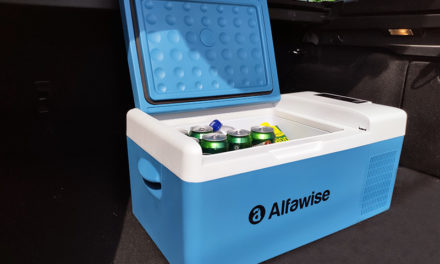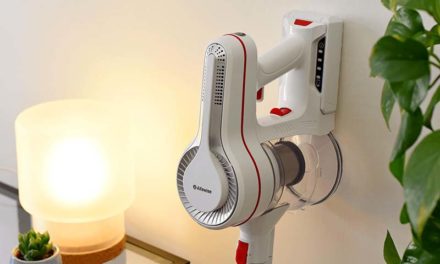
VIVOTEK Network Video Recorder - Security, centralized
To build the system, we unpacked the NVR and the three cameras and then looked for a suitable place for them on a relatively empty table. The NVR was connected to the main backbone with a network cable, in our case to one of the ports of our own internal network router. This is (also) a way to access the World Wide Web, and in case the NVR's four LAN PoE ports have already been used, but we also need additional cameras in the system, they can be accessed and controlled for the NVR by connecting them to the router.
Let's look at the administration interface, first of all Configurations panel:
Device:
In this window, click Start Searching to automatically search for previously unrecognized devices. If the desired models have appeared in the list (this requires a prior run of Install Manager 2, which will be discussed later), click the Add device button to associate them with the system. Then, at the Select Device point, the devices should appear, first with a typically non-verbal number and a series of letters, which you can select to rewrite it individually in the settings that appear in the lower half of the image. If one of our devices does not appear in the list, you can add it to the system manually by entering the required data.
Network:
The most important network settings window. There are two ways to build your system: the first version is to have a router. Then we have to choose the WAN option, which involves deciding an additional issue. Because the NVR's WAN port can also act as a DHCP client, if your router is set to an active DHCP server, the NVR can automatically obtain its own IP address. If you do not have an active DHCP server or simply do not want to use it, you can of course enter the values manually, fixed. In the Service Settings, you can set the two defining ports, which are 80 and 554 by default - in fact, if you are using a factory configuration, you do not need to change them.
LAN (local area network):
Under LAN, you can configure the subnet created by the NVR for the camera system. In our case, 192.168.0.1 is the NVR's own address in its own domain, and because it can act as a DHCP server at this level, it automatically assigns addresses to the cameras between the specified start and end addresses if required.
Acces List:
You can individually configure allow or block lists for which computers with addresses can access the system (whether or not they have an account), which can be modified or deleted as the reasons disappear. By default, all IP addresses are allowed, which logically implies that no addresses are blocked.
DDNS (Dynamic Domain Name Service):
To use the method, we will first need a DDNS provider, this is our test DynDNS.com volt. On the site, we need to create a registration, select the predefined ending we like from the list - in our case it is dyndns.org - and then put in front of the custom prefix, which can be anything (with some stipulations, for example, it can’t contain an accented letter). If you have this, you will need to enter your IP address provided by your ISP. To ensure that the dynamically changing IP address does not cause a problem, the service offers the option of dynDNS communicating the current IP address of the client machine over and over again at predetermined time intervals (e.g., 60 seconds). If our DDNS service is ready and ready for operation (activation may take 10-15 minutes), you can return to the NVR admin, the DDNS tab. All you have to do here is select your service provider, enter the address you created, and enter the username and password you need to access it.
Security:
It is a very important menu item that contains actions related to accesses and users. The root password allows administrator access. The root (Administator) is the full-fledged master of the network, and he has access to all levels of operation, which are as follows:
- System configuration
- Configure devices
- Real-time tracking and control
- Playback
The system can have multiple Administrators. You can create new users under Manage Users. If the goal is a new admin, the Administrator should be selected as the legal level. The operator is a restricted member. It can perform all operations like admin except system related settings. The simplest user is the Viewer, who only has the right to view or play back the live image.
However, it is also possible to change the permissions for each user level in Operator and Viewer, for example, you can remove the device configuration option from the former and view the recordings from the latter - these are up to the Administrators. If this happens, the user-level rights discussed in the previous paragraph will change mutatis mutandis from the default and will not be true for that individual system.
Shedule (programmed recording):
In this panel, you can define a recording programmed for specific times (including the start and end times) in a calendar-like manner. For example, if our employees pass through the room where we store our gold bars from 8 a.m. to 8:15 a.m. Monday through Friday, you may want to program the recording for those times. If we notice a shortage of nuggets in our inventory, we will have in our hands the recordings that can solve the mystery of the disappearance of gold.















